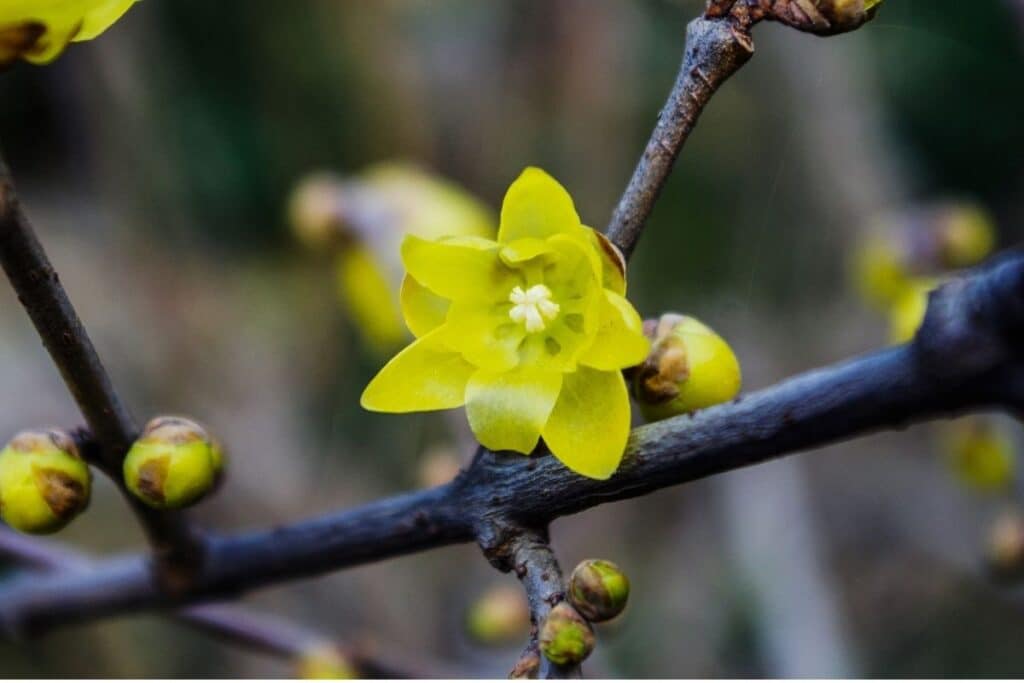Wintersweet, also known for its botanical name Chimonanthus praecox, is a gorgeous flower that releases a lovely fragrance that gives way to its colloquial term. It is fair to say that everybody seems to love this plant and the feelings it elicits due to its powerful fragrance.
Continue reading about wintersweet tree and discover everything you need to know about this exciting plant:
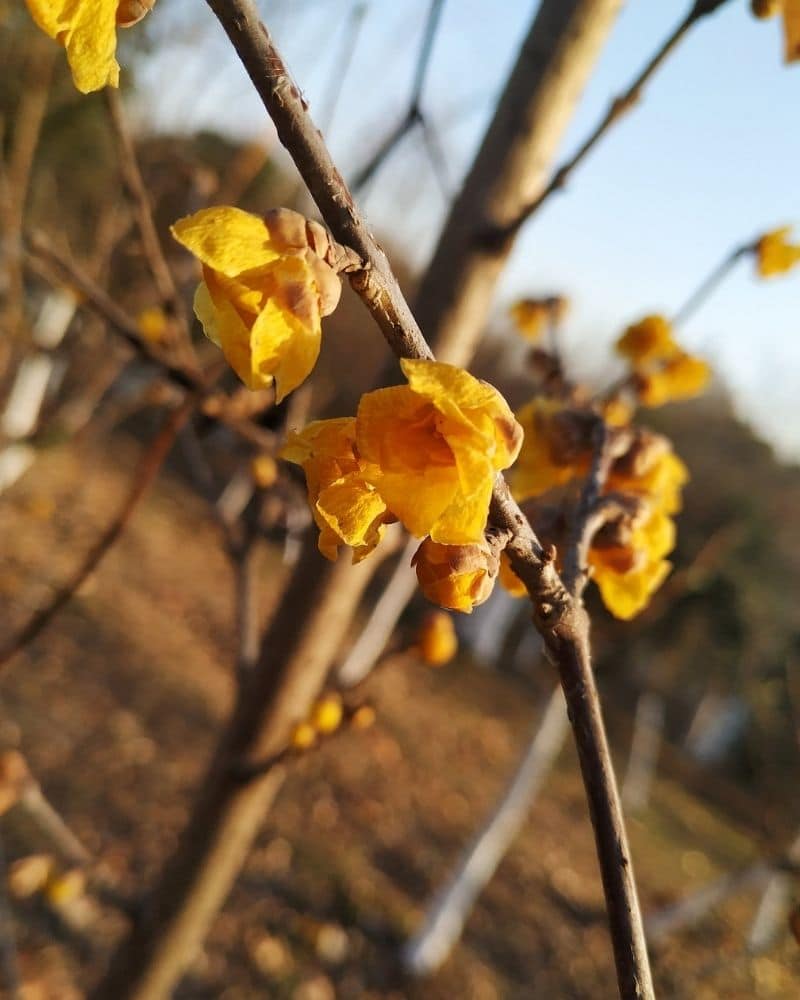
Basic Information About Chimonanthus praecox
- This scented shrub belongs to the Calycanthacea family of plants. They are also known as Japanese allspice.
- Throughout the year, people often walk by this lovely plant without paying too much attention to it. Yet, once winter arrives, wintersweet will steal everybody’s attention due to its beautiful scent and striking appearance.
- This erect, vase-shaped flowering shrub is bushy, with a somewhat arching habit and glossy lanceolate, dark green leaves that turn yellow in the fall.
- Its small yellow flowers produce a pleasant smell and create a sharp contrast with the cold, foggy, and gray winter climate.
- Wintersweet plants are very hardy, even though they are often considered a delicate flower, the truth is that they prefer cold winters, and they will thrive best as soon as the temperature starts to drop.
- This ornamental shrub is native to China (1), where they have named it “plum in wax,” which directly references the bright yellow color the flowers have similar to that of pure wax. In Greek, the word ‘’cheimon,’’ or in this case “chimo’’ means “winter,’’ whereas the word ‘’anthos’’ means ‘’flower’’.
- Nowadays, it can be found all over the world, even in areas such as Los Angeles. And even if they don’t experience hard winters there, this deciduous flowering shrub will still produce a few blossoms each year.
Specific Information about Chimonanthus praecox

This evergreen shrub will quickly grow large if the right growing conditions have been met. It tends to reach up to 15 feet in height and up to 12 feet wide. They are often pruned as a way to prevent them from growing too much.
This plant’s blooms have large petals, which are oppositely arranged, and they resemble a spiral. The flowers range in hue from pale yellow to bright, rich gold, and contain purple and red pigments.
As its name suggests, they only bloom during early winter, although in some areas, they will continue to bloom throughout early spring as well.
The blooming process is soon followed by the fruit, which is only a dry capsule. This deciduous shrub is known for turning its foliage yellow during fall.
According to the US Agricultural Department, the Chimonanthus praecox will thrive best in zones 7 to 9 and sometimes in zone 6, but they must be protected against frosts.
How To Grow and Care for Wintersweet Plant

This evergreen shrub is relatively easy to maintain. Here is everything you need to know to grow healthy Wintersweet:
Light Requirements
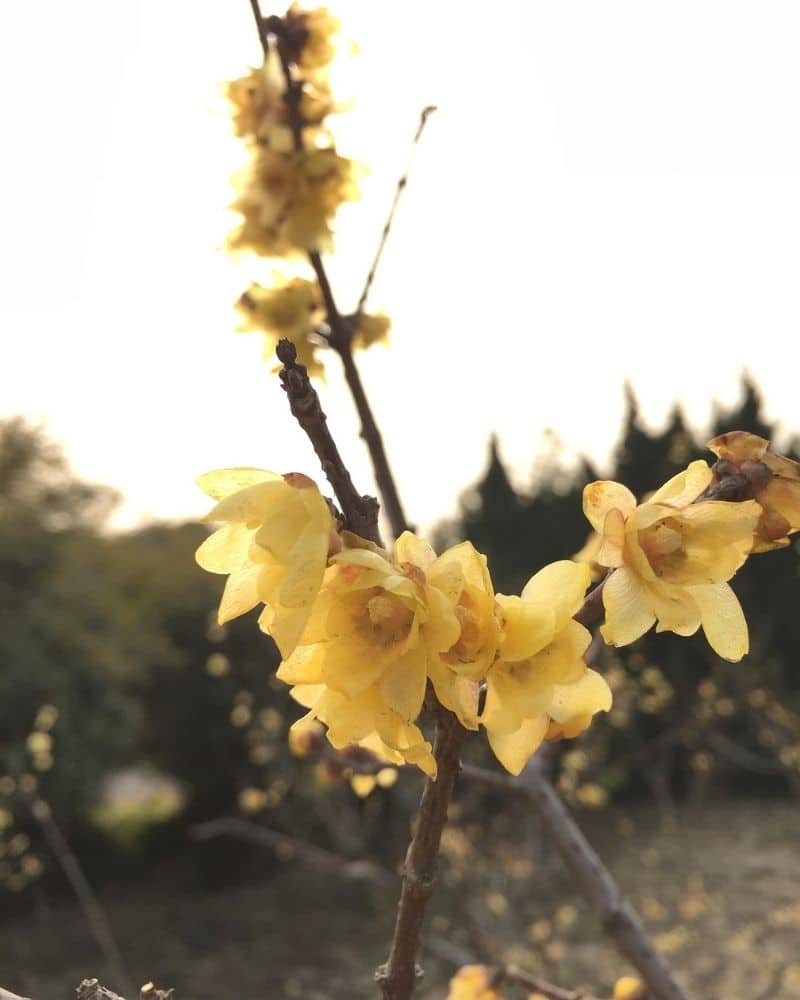
This bush prefers to be exposed to the full sun. The more sunlight they receive, the better they will grow. However, if not enough space is available or summers are too hot, the shrub could be placed under partial shade.
Scorching heat will damage the plant’s leaves, and it will slow down its growth.
Water Needs
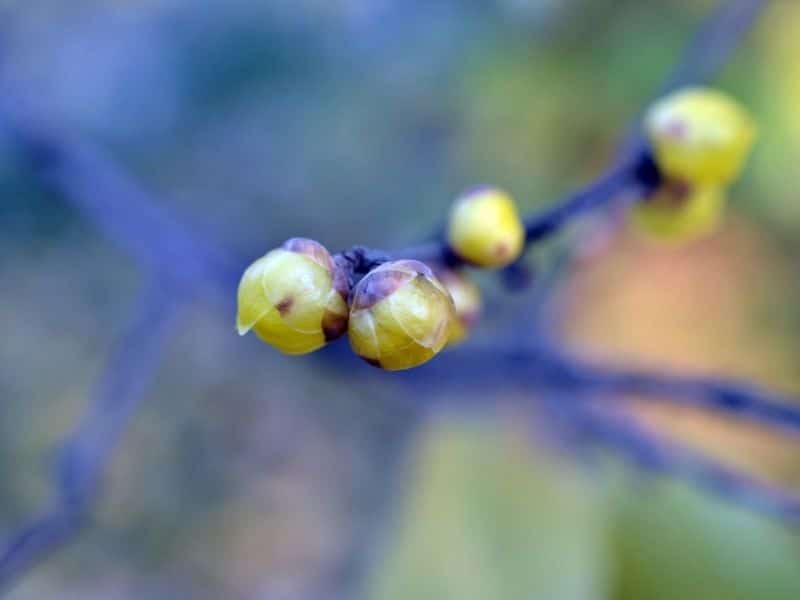
This shrub is very hardy, and it can go a couple of days without receiving any water, especially during fall or winter. Yet, if you live in a hot summer zone, you will need to water it regularly. This could mean four times a week, at least, but it will all depend on the climate.
During winter, it is advisable to water it only when the soil requires it. For you to know when is the right moment, simply place two fingers in the soil, if it’s moist, then leave it as it is. If it’s too compacted or dried, then you need to water it thoroughly.
Soil Preferences
This bush does not have a soil preference. As a result, it will thrive in alkaline, acidic, or clay soils. However, they need to have well-drained soil, especially if they are in an area with plenty of rainfall.
Pests and Diseases
Wintersweet is a very hardy shrub. Not only can they survive the hardest of winters, but they are also strong enough to be healthy and to avoid most pests and diseases.
Pruning
The maintenance of this shrub mainly relies on its pruning because they need regular pruning.
Do keep in mind that the bare stems need to be at least a year old to bear pale yellow flowers. If they are not, they will not produce yellow flowers for a year or so.
Removing all the broken branches or even the dead blooming branches or wood you see is advisable. This way, the bush will have more opportunities to thrive.
FAQs
Here are some questions answered. Hopefully, they will make this planting journey easier for all.
Is wintersweet fast growing?
No, Wintersweet (Chimonanthus praecox) is not considered fast-growing. It has a moderate growth rate, and it may take several years to reach its mature size.
What is wintersweet used for?
Wintersweet is cultivated for its fragrant, winter-blooming flowers. The super showy blooms are often used in floral arrangements, and the vigorous plant is grown for ornamental purposes in your winter garden and landscapes.
Is chimonanthus praecox poisonous?
No, Chimonanthus praecox (wintersweet) is not typically considered poisonous. However, as with any plant, caution should be exercised, and it’s advisable to keep it out of reach of pets and small children.
What are the growing conditions for winter sweet?
Like most garden plants, Wintersweet thrives in well-draining soil and prefers a sunny or partially shaded location. It can tolerate various soil types but does best in fertile, moist soil.
Conclusion
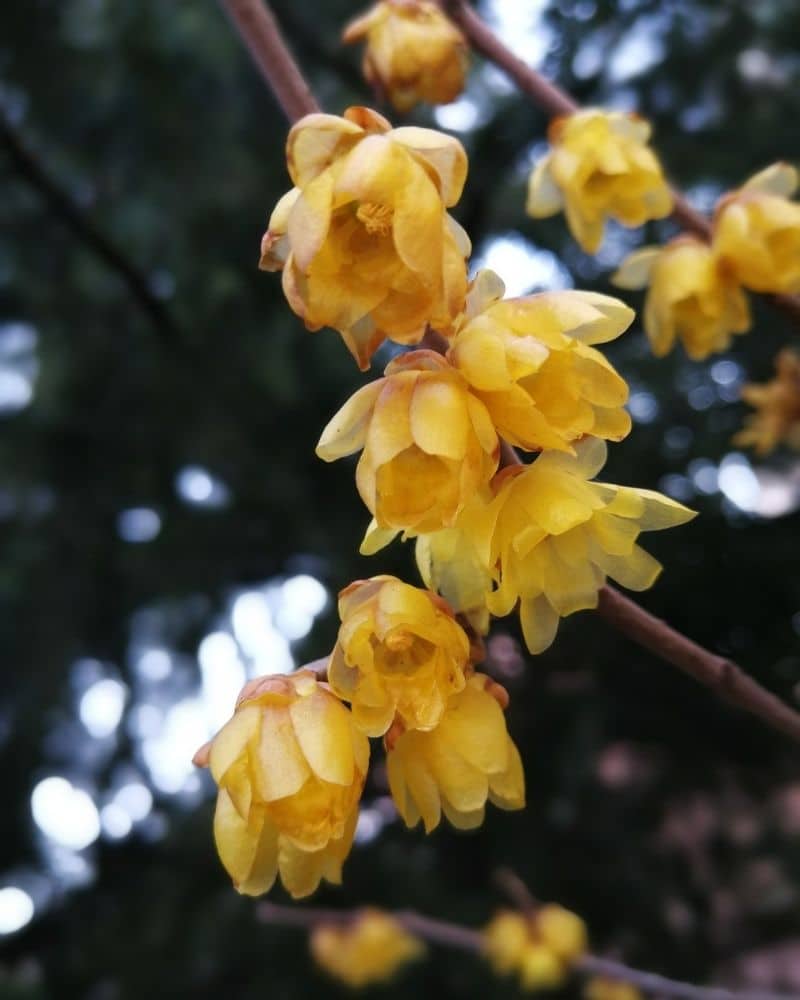
This exotic plant will surely catch people’s attention due to its beautiful scented flowers. And even if they are often considered delicate, they can survive the most challenging winters, and they will still bloom amazingly well.
Wintersweet plant care is relatively easy, and this ornamental shrub is much loved because it doesn’t require much maintenance. On the contrary, just a little prune will do the job here and then!
This ornamental shrub is much loved because it is a very low maintenance plant. On the contrary, just a little prune here and then will do the job!
References
Reference List:
(1) Li Z, Jiang Y, Liu D, Ma J, Li J, Li M, Sui S. Floral Scent Emission from Nectaries in the Adaxial Side of the Innermost and Middle Petals in Chimonanthus praecox. Int J Mol Sci. 2018 Oct 22;19(10):3278. doi: 10.3390/ijms19103278. PMID: 30360370; PMCID: PMC6214010 https://pubmed.ncbi.nlm.nih.gov/30360370/
(2) Zhao Y, Ren Y, Xu Y, Yan M, Huo Y, Zhao X, Yuan Z. The complete chloroplast genome sequence of Chimonanthus praecox cv. concolor. Mitochondrial DNA B Resour. 2019 Sep 24;4(2):3236-3237. doi: 10.1080/23802359.2019.1669084. PMID: 33365934; PMCID: PMC7707377.
Close
*image by [email protected]/depositphotos

